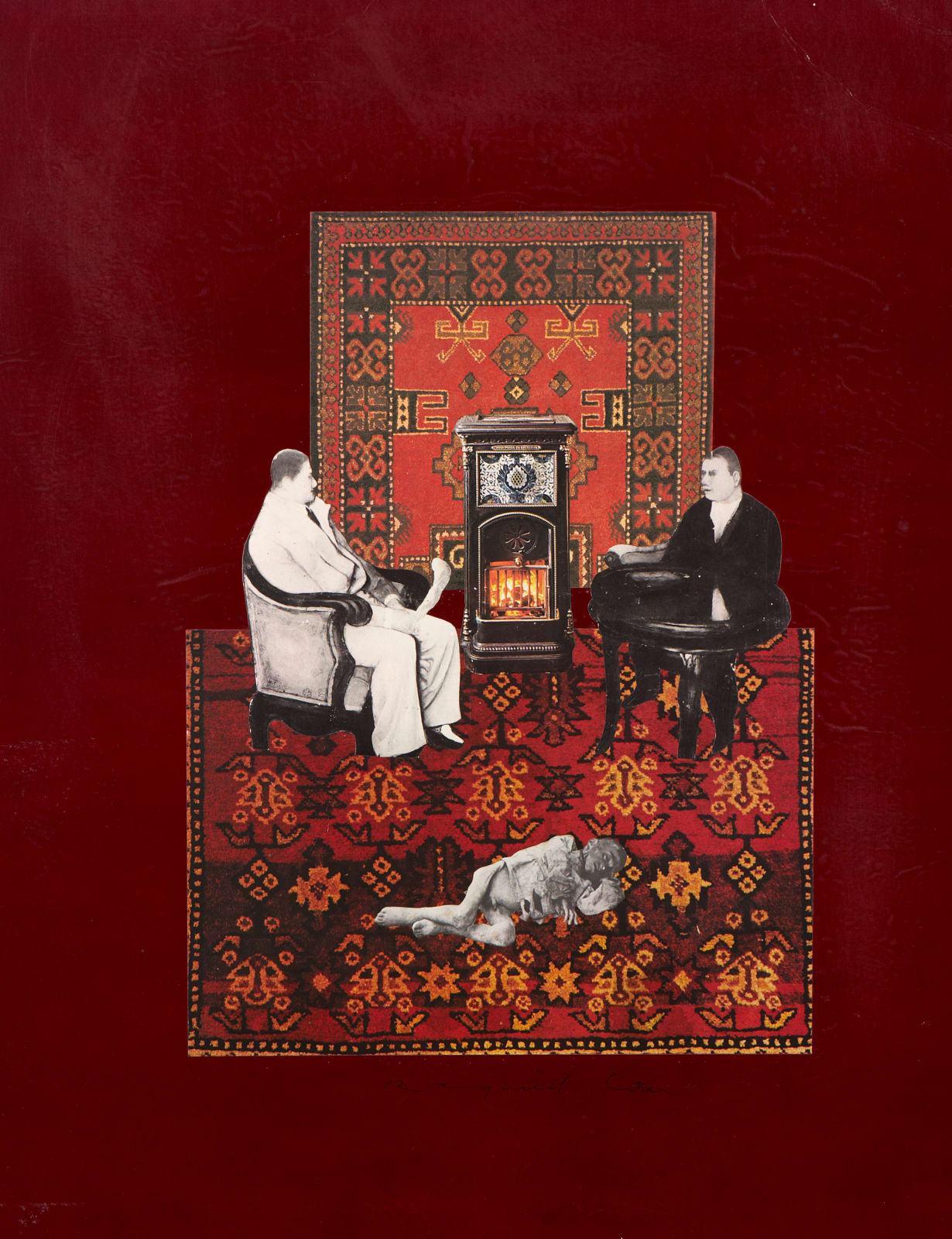Reginald Case 1937-2009
This work and its companion, 'Nazi Berlin Cabaret', are part of a 1978 series on the theme of holocaust, including a piece called ‘Sonderbehandling (special treatment, Nazi bureaucratic term for killing prisoners)’, displayed at the V&A. As a child growing up in the 1940s in the United States, Case was disturbed by the postwar revelations of the horror that had taken place in Europe and began to exorcise his childhood demons in a series of collages on this theme.
Max Heiliger was a fictional name created during the Nazi era under an agreement between Reichsbank president Walther Funk and Heinrich Himmler, to establish bank accounts under a false identity to launder valuables stolen from Nazi concentration and extermination camp victims. It included banknotes, jewellery and gold from teeth, wedding rings and spectacle frames. The name "Heiliger" (saint) derives from the word “heilig” (holy). In this chilling work, two comfortable bureaucrats, cosily installed by the fire, are juxtaposed with the image of a concentration camp victim on the rug in front of them.
Provenance
presented by the artist 2008Be the first to know – Sign Up
Subscribe to our newsletter and be the first to know about everything new at Ben Uri, including the constantly evolving and expansive online content across our exhibitions, collection and research.
We value and respect your privacy. Your personal data will be kept private and processed securely, according to our Privacy Policy. If you change your mind anytime, you can unsubscribe directly when receiving a mail from us (the link will be at the bottom of the email) or contact us.
* denotes required fields
This website uses cookies to improve your experience. If you are not happy with this, you can opt-out below.


